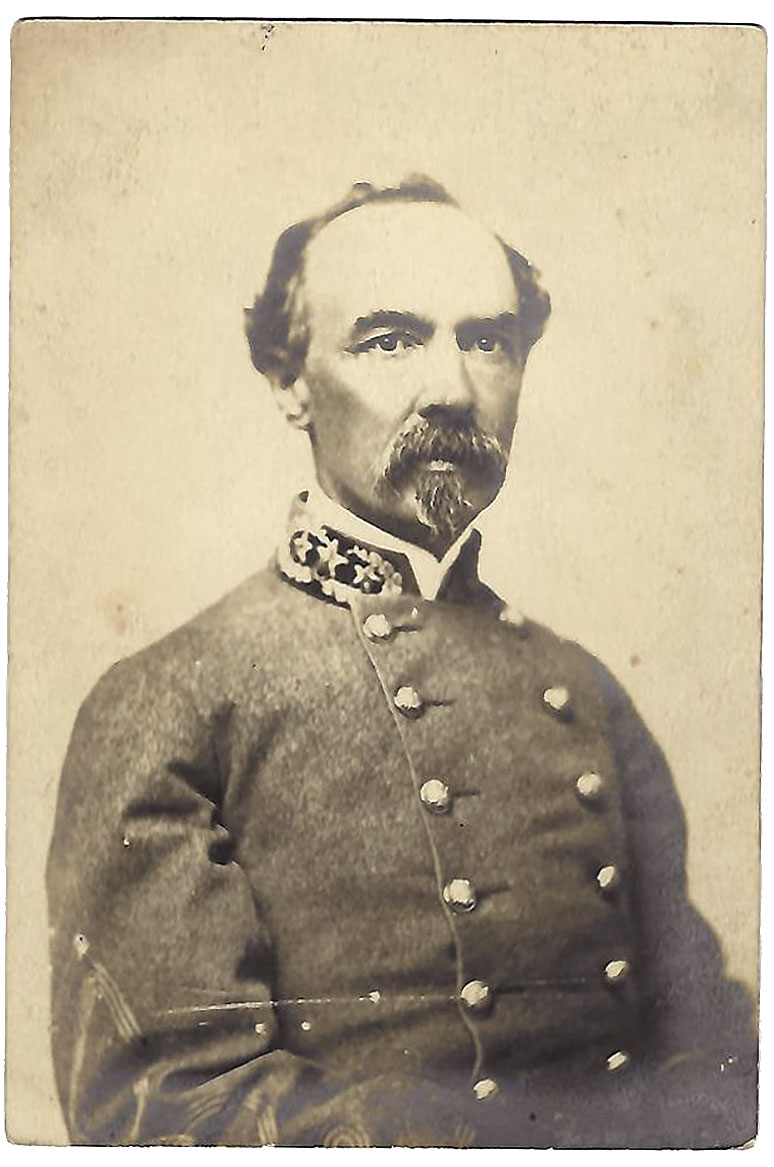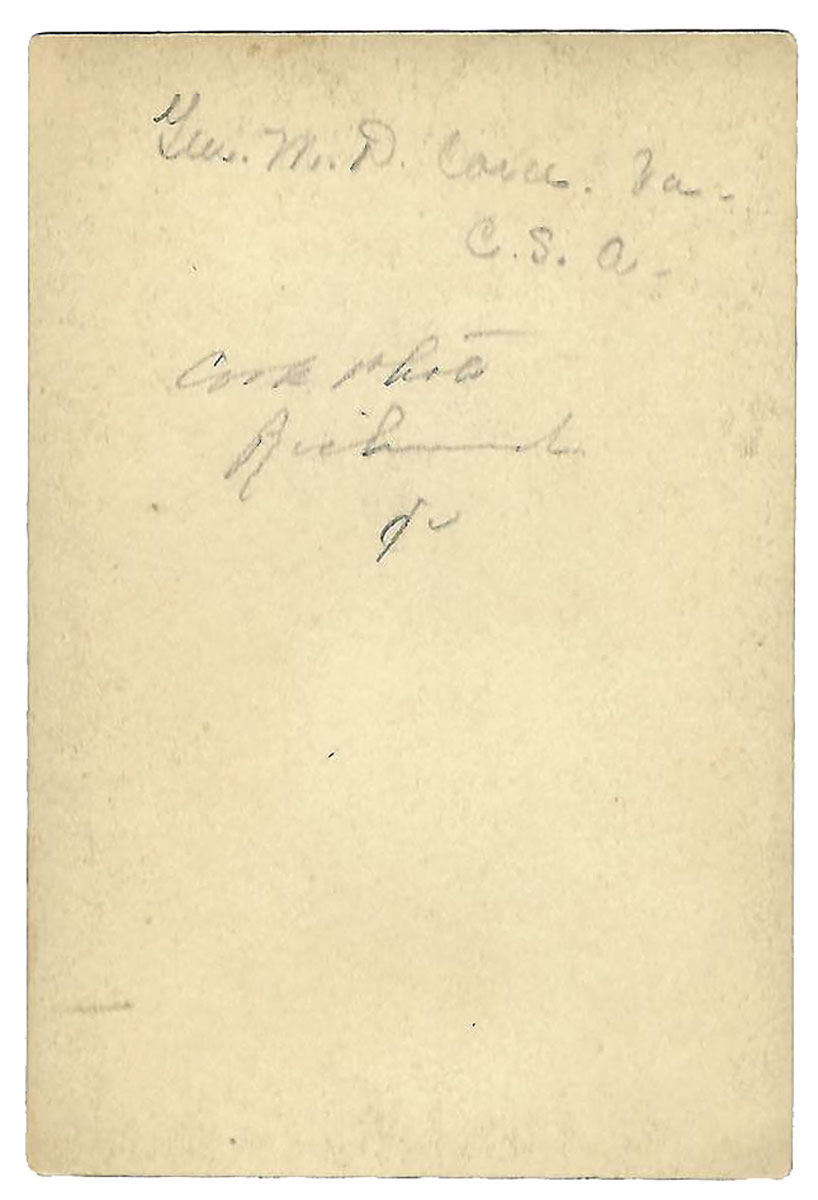site search
online catalog
POST-WAR UNMOUNTED SILVER PRINT OF GENERAL MONTGOMERY DENT CORSE, FROM A RICHMOND PHOTOGRAPHER, GEORGE S. COOK & SONS

Hover to zoom


$150.00
Quantity Available: 1
Item Code: 1189-157
Shipping: Determined by Method & Location of buyer
To Order:
Call 717-334-0347,
Fax 717-334-5016, or E-mail
Born in Alexandria, Virginia, in 1816, Corse had varied career pursuits prior to the war, working as a banker, gold miner, and soldier serving in the Mexican-American War.
Corse served the Army of Northern Virginia first as a major in the 6th Virginia and then as the Colonel of the 17th Virginia. He served in that capacity until November 1862 when he was promoted to brigadier general. He was present for Antietam, where he was severely wounded and was able to take command again for Fredericksburg. During a few important battles, he was on detached service such as Chancellorsville and Gettysburg where he missed Pickett’s Charge. In late 1863, Pickett’s Division, which included Corse’s brigade, was transferred further south and fought at New Bern, and Drewry’s Bluff. Later, Corse transferred back to the Army of Northern Virginia and saw action at Cold Harbor, Petersburg, and Five Forks. His last battle ended with his capture at Sayler’s Creek on April 6, 1865.
Post-War, he returned to his business pursuits in Virginia, remaining an active member of his community until his death in 1895.
This photograph is a lesser-known photograph type called a silver print, where silver halide is suspended in a gelatin emulsion. This emulsion coats the base and then a chemical wash is poured over the paper exposing the image. This image was produced from the original negative by the Cook Studio in Richmond sometime after 1880.
The Cook studio was owned by George S. Cook whose two sons, George LaGrange Cook and Heustis Cook, also worked as photographers. The father, George S. Cook, is famously known for taking the first combat images of ironclads firing on Ft. Moultrie in 1863. George S. was born in 1819 in Connecticut and moved south to Louisiana in 1839. From there, he moved several times (always remaining in the South), making money as a merchant and studying photography until he eventually wound up in Richmond in 1880, where he bought Anderson’s photography studio. This is where many of the original glass plate negatives came from to reproduce his photographs. The Cook studio also purchased other collections of negatives as well.
This photograph measures approximately 6 inches by just under 4 inches wide.
This image is in good condition overall with only minor dings to the corners and surface dirt throughout. The reverse has a pencil ID: “Gen. M.D. Corse. Va. / C.S.A.” and “Cook photo / Richmond” is present in pencil as well. [cla] [ph:cla]
~~~~~~~~~~~~~~~~~~~~~~~~~~~~~~~~~~~
THIS ITEM, AS WITH ALL OTHER ITEMS AVAILABLE ON OUR WEB SITE,
MAY BE PURCHASED THROUGH OUR LAYAWAY PROGRAM.
CLICK HERE FOR OUR POLICIES AND TERMS.
THANK YOU!
Inquire About POST-WAR UNMOUNTED SILVER PRINT OF GENERAL MONTGOMERY DENT CORSE, FROM A RICHMOND PHOTOGRAPHER, GEORGE S. COOK & SONS
Most Popular
Historical Firearms Stolen From The National Civil War Museum In Harrisburg, Pa »
Theft From Gravesite Of Gen. John Reynolds »
Selection Of Unframed Prints By Don Troiani »
Fine Condition Brass Infantry Bugle Insignia »
Large English Bowie Knife With Sheath 1870’S – 1880’S »
Imported (Clauberg) Us Model 1860 Light Cavalry Officer's Saber »
featured item
VERY SCARCE 1799-1800 SWAN CONTRACT VIRGINIA MILITIA REGIMENTALLY MARKED MUSKET: 42nd REGIMENT, PITTSYLVANIA
This musket is stamped “42. VA. REGT. PITTSYLVANIA” on the barrel, was later altered to percussion and then shortened for use in the civilian market. It is a scarce survivor from muskets delivered to Virginia by Jame Swan of Boston in January… (1000-241). Learn More »


